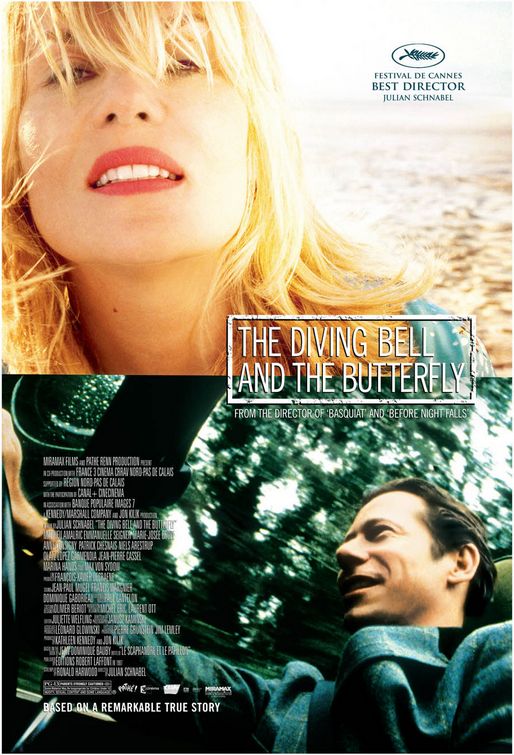“The Diving Bell and the Butterfly” is a deeply moving and visually stunning biographical drama directed by Julian Schnabel, based on the memoir of the same name by Jean-Dominique Bauby. It recounts the remarkable true story of Bauby, a French journalist and editor of Elle magazine, who, at the age of 43, suffered a severe stroke that left him with a rare condition known as locked-in syndrome.
The film begins by showcasing Bauby’s vibrant life before the stroke, portraying his career success, zest for life, and relationships. However, his life takes a drastic turn when he wakes up from a coma to find himself paralyzed from head to toe, with the exception of his left eye. Despite this debilitating condition, Bauby retains full mental faculties but is unable to move or communicate verbally.
The movie delves into Bauby’s perspective, as he describes his experiences through his vivid imagination and inner thoughts. He communicates by blinking his left eye, and through an arduous process of blinking in response to a specially designed communication system, he dictates his memoir one letter at a time.
Through Bauby’s inner monologue and flashbacks, the audience gains insight into his emotional turmoil, his memories, regrets, and his struggle to come to terms with his new reality. Despite his physical limitations, he refuses to be confined by his circumstances and finds solace in his memories, dreams, and imagination.
The film’s unique cinematography provides a profound insight into Bauby’s world, alternating between his limited point of view, where the audience sees the world as he does, and breathtaking visual sequences that reflect his dreams and memories.
“The Diving Bell and the Butterfly” is a poignant exploration of the resilience of the human spirit, the power of imagination, and the triumph of the human will over adversity. It’s a touching and introspective journey that encourages viewers to contemplate the fragility of life, the importance of seizing every moment, and the ability to find beauty and meaning in the most challenging circumstances.
When asked about a “good scene” and a “bad scene” this is what AI says:
Good Scene: The use of first-person perspective in depicting Jean-Dominique Bauby’s experiences is visually innovative.
Potential Critique: The film’s unconventional storytelling may be challenging for some.
Tell us, do you agree? Disagree? What is YOUR Favorite Scene in a Movie?? Follow us on X (formerly Twitter) and let us know!
Offers/Advertising:
How to use and interact with the ChatGPT AI language model
The #1 AI Copywriting and Marketing Training Course
Leverage AI for seamless video creation. No camera fuss or editing grind
“A.I Creators Club” – Community of video makers using A.I.





